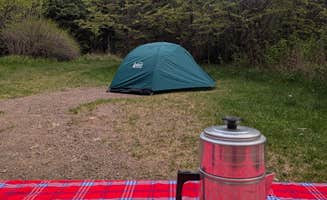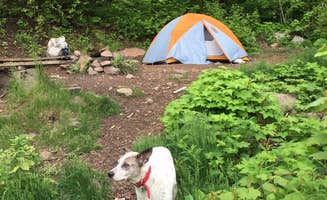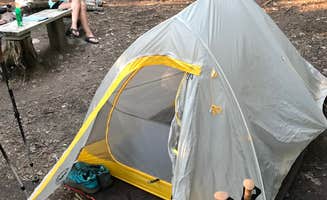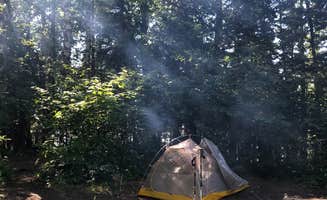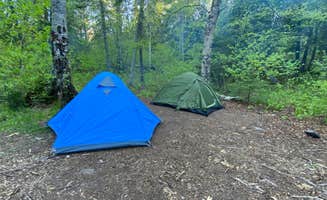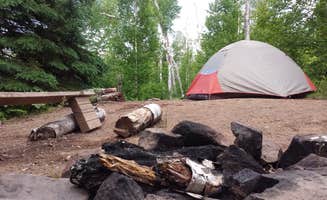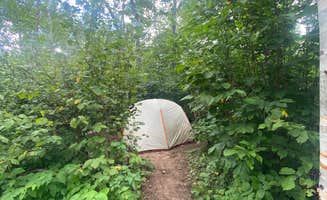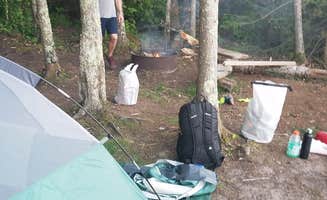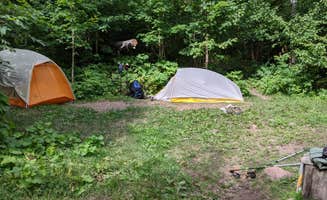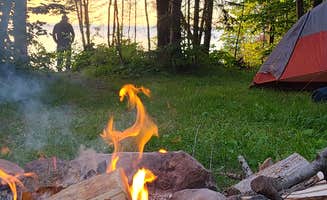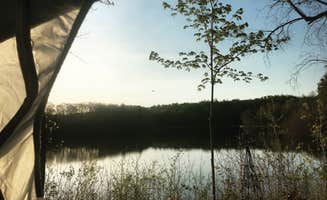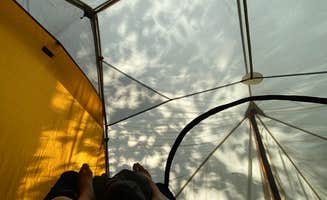Tent camping near Illgen City, Minnesota offers diverse wilderness experiences beyond the popular shoreline sites. The region sits at an elevation of approximately 900-1100 feet above sea level, with inland forests consisting primarily of mixed hardwoods and pine stands. Winter camping is permitted at select backcountry sites, though temperatures regularly drop below 0°F from December through February, requiring specialized cold-weather gear.
What to do
Hike the rugged trails: At George H. Crosby Manitou State Park Campground, the terrain challenges even experienced hikers. "The trails of this park are either a hikers dream or nightmare. Exposed roots, large rocks, and elevation changes are common. Good potential for a twisted ankle," notes Jeremy B. The Matt Willis trail is particularly wild, with multiple fallen trees creating natural obstacles.
Overnight backpacking loops: Plan multi-day trips connecting campgrounds on the Superior Hiking Trail. "When you hike back out, you can either complete the Twin Lakes loop and finish back where you started at the Penn Blvd parking lot, or you can go north another 8 miles or so to Tettegouche State Park on the SHT," advises Bri M. Many loops require proper navigation skills as some trail segments receive minimal maintenance.
Canoe on remote lakes: Inland lakes offer peaceful paddling opportunities with minimal crowds. At Divide Lake, one visitor reported: "We canoed over to it which makes it feel more remote than it actually is. Had a lot of luck fishing for trout as well!" Canoes are sometimes included with certain cabin rentals, particularly at Tettegouche Camp.
What campers like
Secluded tent sites: Bean and Bear Lakes Hike-In provides isolated camping away from crowds. "The site has a 1 night stay maximum because of its popularity and is located about 3 miles from the Superior Hiking Trail parking lot in Silver Bay. You can hike up above the lake for an amazing view of both Bear and Bean Lakes," mentions Andrea G. The sites have uneven terrain requiring strategic tent placement.
Wildlife viewing: Dawn and dusk offer the best animal sighting opportunities. "We saw deer and rabbits roaming about. Amazing hiking trails near by and very near the shore of Lake Superior," reports Kari K. Campers commonly report hearing loons on the inland lakes throughout the night.
Night sky viewing: The inland forest sites provide occasional breaks in the canopy for stargazing. One camper at George H. Crosby Manitou State Park noted, "There is a rocky outcrop in the middle of the site that is a perfect platform to lay down on and stargaze." Light pollution is minimal at backcountry sites, especially on clear winter nights.
What you should know
Difficult access to many sites: Lake Superior Cart-in Campground requires significant effort. "The trek into the campground was manageable and the area was very scenic. Going back to camp at the drive-in campground next!" notes Cody A. Most carts provided at park offices have seen heavy use and may have maintenance issues.
Water access considerations: Water sources vary significantly between sites. "The water access from the site wasn't huge but it was good for getting water," reports Steph H. about South Sonju Lake. Many sites require water filtering equipment, as potable water is unavailable at most backcountry locations.
Latrine locations vary: Bathroom facilities at primitive sites can be distant from tent pads. One camper at George H. Crosby Manitou State Park observed, "The primitive toilet was a little walk and closer to the next backpack site (#4)." Some latrines provide unexpected views, with one camper noting a toilet with a view of Lake Superior.
Tips for camping with families
Choose access level carefully: State Land Lax Lake Area offers drive-up options for families not ready for backpacking. "The dirt road in was fine, the driveway was overgrown and the clearing has lots of rocks and vegetation so glad I checked it out in the daytime," advises TexasRed. Checking sites in daylight helps identify hazards for children.
Start with shorter hikes: For first backpacking trips with children, select closer sites. "When my oldest and I headed out for her first backpacking trip we decided to do a quick 3 day trip with 2 overnights that were fairly close together," explains Steph H. The trails between Sonju Lake Road and Baptism River offer manageable distances for beginners.
Consider seasonal timing: Mosquito populations peak in early summer. "Mosquitoes were the worst in the parking lot but tamed once I got moving and applied some spray," shares Sara A. Late August through early October typically offers the best combination of mild temperatures and reduced insect activity.
Tips from RVers
Limited RV options inland: Eighteen Rustic Lake Campground accommodates smaller rigs but requires careful planning. "Campground is suitable for truck campers and smaller. There was a crappy looking RV parked next to the vault toilet; sketchy, looked like long term residents," notes Fred S. Road conditions deteriorate after rainfall, making access challenging.
Pack additional water supplies: No water hookups exist at rustic campgrounds. "No drinking water. Fire ring at site. Sites spaced apart okay. Beautiful lake," reports Fred S. RVers should arrive with full water tanks as the closest refill stations may be 20+ miles away.
Prepare for gravel roads: Access routes to most campgrounds involve unpaved sections. "Road coming to the campground can be rough in places, but doable with passenger car," explains one camper at Eighteen Lake. Many access roads become impassable for larger RVs during spring thaw or after heavy rainfall.


